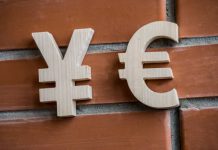Markets
An impressive rally of Chinese equities laid the groundwork for a broad risk-on rally yesterday. Eco data were rather few. German May orders data disappointed rebounding a lower than expected 10.4% M/M. Later, the US June non-manufacturing beat the consensus by a big margin, supporting recovery hope. The headline index jumped from 45.4 to 57.1, well into expansion territory. All sub-indies except for employment printed above the 50 boom/bust mark. Business activity jumped to 66 (from 41.0) and new order rose to 61.6 (from 41.9). However, for now the rebound in activity doesn’t lead to a rise in employment. The index improved from 31.8 to 43.1 but remains in contraction territory. Both the German data and the manufacturing ISM didn’t change overall market dynamics. US equities opened with gains of about 1.5% and maintained a positive momentum to close near the intraday top levels. The Nasdaq (+2.2%) set a new record close. The Dow and the S&P respectively gained 1.59% and 1.78%. The rally initially bear steepened the US yield curve, but that move faded into the close. US yields rose only modestly between 0.4 bp (2-y) and 1.20 bp (30-y). German yields even closed almost unchanged across the curve. The dollar initially was a main victim of the risk-rally. In two selling waves, the TW dollar (DXY) touched the 96.60 area early in US dealings. EUR/USD neared the 1.1349 resistance, but a real test didn’t occur. Dollar selling eased later (solid US ISM?). EUR/USD closed at 1.1309. Interestingly, USD/JPY mainly followed the overall USD price pattern. USD/JPY finished at 107.35 from 107.49 at the open. So, the yen didn’t decline on the global risk-on. Sterling also hardly profited from the risk-on. EUR/GBP even closed with a modest gain at 0.9053.
This morning, Asian equities again opened in positive territory, with (mainland) China still outperforming, but the intraday momentum gradually turns a bit more cautious. US equity futures currently trade about 0.5% lower. China’s outperformance supports the yuan. The off-shore yuan even filled bids below USD/CNH 7. The Reserve Bank of Australia left its policy rate and target for the 3-year yield unchanged at 0.25%. The RBA kept a balanced, even slight constructive tone on the recovery. AUD/USD came close to the 0.70 barrier, but eased late this morning (currently 0.6960 area). However, that was mainly a USD move rather than a reaction to the RBA decision.
Today’s eco calendar is extremely thin. This morning, German May production is interesting, but probably no market mover. This also applies to the US JOLTS Job openings. The US Treasury will sell $ 46 bln of 3-y notes at a regular auction. Given extreme limited price moves in that part of the US yield curve, we don’t expect a big market impact. Assuming a pause in the global risk rally, core bunds might stay well bid given yesterday’s constructive performance in a risk-on context. The dollar might gain some reprieve in a daily perspective, but longer term, the USD probably is still captured in a sell-on-upticks pattern. EUR/USD is drifting back to the 1.13 area. A return below 1.1220 area would be disappointing. EUR/USD 1.1349 remains first topside reference. For the EUR/GBP cross rate 0.90 still looks a solid support.
News Headlines
Atlanta Fed president Bostic said the US economic recovery risks stalling because of the spike in coronavirus cases in many states. High-frequency data showed signs of “levelling off” in terms of business reopening and mobility, he told the FT during an interview. US coronavirus cases rose 2% yesterday, above the past week’s average of 1.8%
China warned the UK for consequences if it sticks to plans to phase out the use of Huawei in the UK’s 5G telecommunication networks. PM Johnson announced to do so as soon as this year.
Italy intends to expand public investment to boost growth rather than curb spending as it is setting up the way out of the coronacrisis and its preexisting chronic economic sluggishness, an overnight statement from the government showed. State investment will rise above 3% of GDP over the next 4 years, focusing on education, moves to boost private investment and measures to improve competitiveness.













